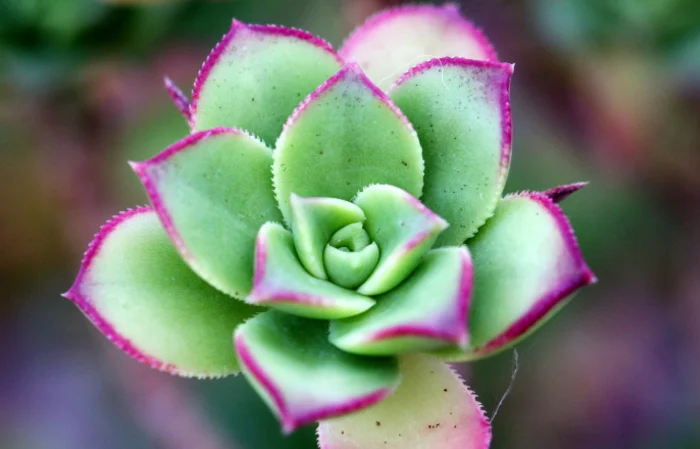The Bear Claw Succulent, scientifically known as Cotyledon tomentosa, is a delightful and easy-to-grow plant perfect for both novice and experienced gardeners. This article will provide a comprehensive guide on how to propagate Bear Claw Succulents, ensuring you can enjoy the beauty of this unique plant in your home or garden.
Understanding Bear Claw Succulent
Cotyledon tomentosa belongs to the Crassulaceae family and is native to Africa. In its natural habitat, this succulent grows in rocky fields and on steep cliffs where the porous soil provides excellent drainage. The plant is characterized by its chubby, furry leaves that resemble tiny bear claws, hence its common name. When properly cared for, the tiny “teeth” at the edges of the leaves can turn red, adding to its charm.
Propagation Methods
Propagating Bear Claw Succulents can be done through various methods, including seed propagation, leaf cuttings, and division. Each method has its own set of instructions to ensure success.
Seed Propagation
While seed propagation can be a rewarding experience, it is generally slower and more challenging than other methods. Here’s how you can do it:
Collecting Seeds: Obtain fresh seeds from a reliable source. If you have a mature Bear Claw Succulent, you can also attempt to collect seeds from its flowers.
Sowing Seeds: Prepare a well-draining seedling mix. Moisten the soil and sow the seeds lightly on the surface. Avoid covering them with soil as they need light to germinate.
Germination: Place the seed tray in a warm, bright location but avoid direct sunlight. Keep the soil moist but not waterlogged. Germination can take several weeks to a month.
Transplanting: Once the seedlings have developed a few sets of leaves, they can be transplanted into individual pots.
Leaf Cuttings
Leaf cuttings are a popular and straightforward method for propagating Bear Claw Succulents. Here’s a step-by-step guide:
Preparing the Leaf: Choose a healthy, mature leaf from the plant. Use a clean, sharp knife or pruning shears to make a clean cut at the base of the leaf.
Callusing: Allow the cut end of the leaf to dry and form a callus, which is a protective layer that helps in root development. This can take a few days to a week.
Planting: Once the callus has formed, lay the leaf on top of a well-draining soil mix, ensuring the cut end is in contact with the soil. Alternatively, you can insert the cut end slightly into the soil.
Rooting: Place the pot in a bright location with indirect sunlight. Mist the soil lightly to keep it moist but not soaked. Roots should start to develop within a few weeks.
Transplanting: When the roots are well-developed and the new plant starts to grow, you can gently transplant it into its own pot.
Division
Division is the quickest method for propagating Bear Claw Succulents, especially if you have a mature, overgrown plant. Here’s how you can do it:
Preparing the Plant: Choose a healthy plant that has developed multiple rosettes or offsets. Ensure the plant is well-watered before dividing to make the process easier.
Dividing the Plant: Carefully remove the plant from its pot and gently separate the rosettes or offsets from the main plant. Use a clean, sharp knife or pruning shears to make clean cuts.
Repotting: Plant each division in its own pot with a well-draining soil mix. Water thoroughly after repotting and place the pots in a bright location.
Care and Maintenance
Proper care and maintenance are crucial for the success of your propagated Bear Claw Succulents. Here are some tips to ensure your plants thrive:
Sunlight: Bear Claw Succulents thrive in ample sunlight but can tolerate partial shade. Aim for 6 hours of sunlight outdoors or place them near a south-facing window indoors.
Watering: Water when the top of the soil is dry down about 1-2 inches. Use the “soak and drain” method and choose a pot with a drainage hole. Reduce watering in the winter when the plant is dormant.
Soil: Use a well-draining soil mix specifically formulated for cacti and succulents. You can also add perlite and coarse sand to ordinary potting soil.
Fertilization: Fertilize lightly with a succulent fertilizer once a month during the active growing season (spring and fall). Avoid fertilizing in the winter months.
Conclusion
propagating Bear Claw Succulents is a rewarding experience that can add more of these charming plants to your collection. Whether you choose seed propagation, leaf cuttings, or division, following the steps outlined in this guide will increase your chances of success. With proper care and maintenance, your Bear Claw Succulents will thrive and bring beauty to your home or garden for years to come.
Related Topics:


